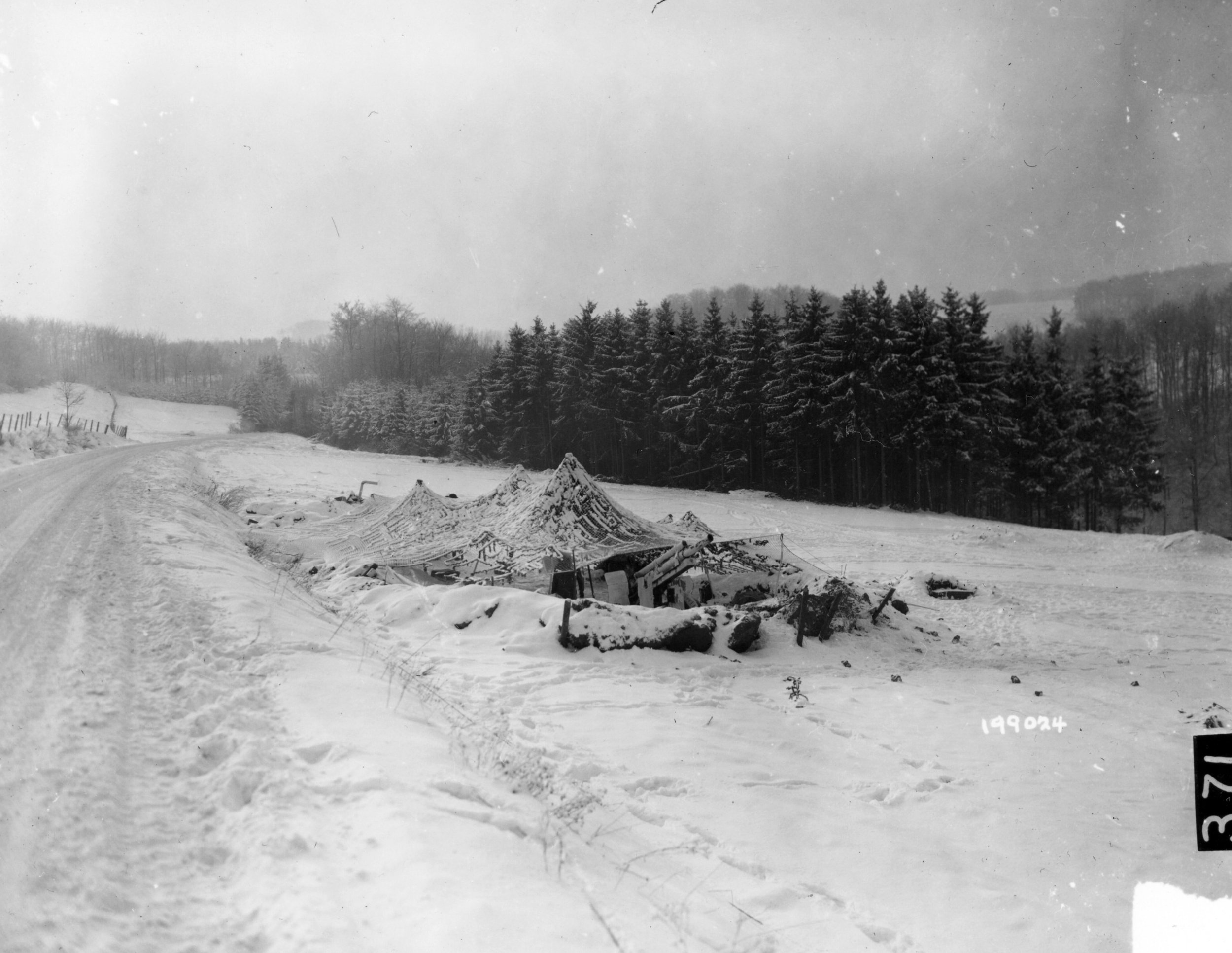
382nd, 383rd, and 928th Artillery Battalions
The 103rd’s artillery section was comprised of four Artillery Battalions: the 382nd Artillery Battalion, the 383rd Artillery Battalion, the 928th Artillery Battalion (all three of these units operated 105 mm guns) and the 384th Artillery Battalion (manning 155 mm guns). The various artillery battalions were mainly tasked with providing either pre-attack barrages, or providing fire support for the infantry units when called by their F.O.’s (forward observers). There were normally at least one F.O. assigned to each infantry battalion to call for fire support missions. Under “The War: Document Collection” tab, there are morning reports from each battalion which detail their locations from day to day while in Europe.
The artillery pieces that these battalions used were essential for supporting the infantry and continuous advance of the 103rd Infantry Division during their time in combat. Depending on the mission the infantry was expected to carry out, or the fire support that was requested, different batteries and battalions would fire their weapons. The 105 mm guns of the 382nd, 383rd, and 928th Artillery Battalions were perhaps the most popular and widely used pieces of artillery by the U.S military during World War II. The 105 mm artillery piece was designed and produced by the U.S. military in response to the need for more powerful artillery to fight against the modern tanks, artillery, and mobile infantry that were seen in Europe prior to America entering the war.
The 105 mm gun was designed to replace the 75 mm artillery piece that had been used in the First World War, but did not have the ability to destroy the more advanced tanks of the Second World War. The 105 mm gun, while expensive to produce, quickly became popular both for its ability to fight enemy armor and, more commonly, to provide devastating ground support for infantry soldiers. The 105 mm artillery shell weighed approximately 38 pounds, and could be fired over 12,000 yards or around 7 miles effectively.
Each artillery battalion has their own distinct unit insignia that have their battalion mottos attached. However, each insignia has some aspect of a red background which is historically the identifying color of the Artillery branch in the Army. Some of the unit insignia’s also have an image of a cannon or artillery round from previous American conflicts which is meant to showcase the heritage of the U.S. Army Artillery branch.
To view an interactive StoryMap of the 103rd Infantry Division, click here.
To see how many men of the 382nd Field Artillery Battalion came from the ASTP program and what school they came from, click here.
To see how many men of the 383rd Field Artillery Battalion came from the ASTP program and what school they came from, click here.
To see how many men of the 928th Field Artillery Battalion came from the ASTP program and what school they came from, click here.
Photo Credit:
Header Photo: Unknown. SC 199024 - This 105mm howitzer is in a camouflaged position on the U.S. Third Army front near Haller, Luxembourg. 12 January, 1945. U.S. Signal Corps Archive via Flickr.
Body Text Photo: “Cactus Caravan” Albert Love Enterprises, Atlanta Georgia, 1944, Special Collections at McCain University Library and Archives, the University of Southern Mississippi.